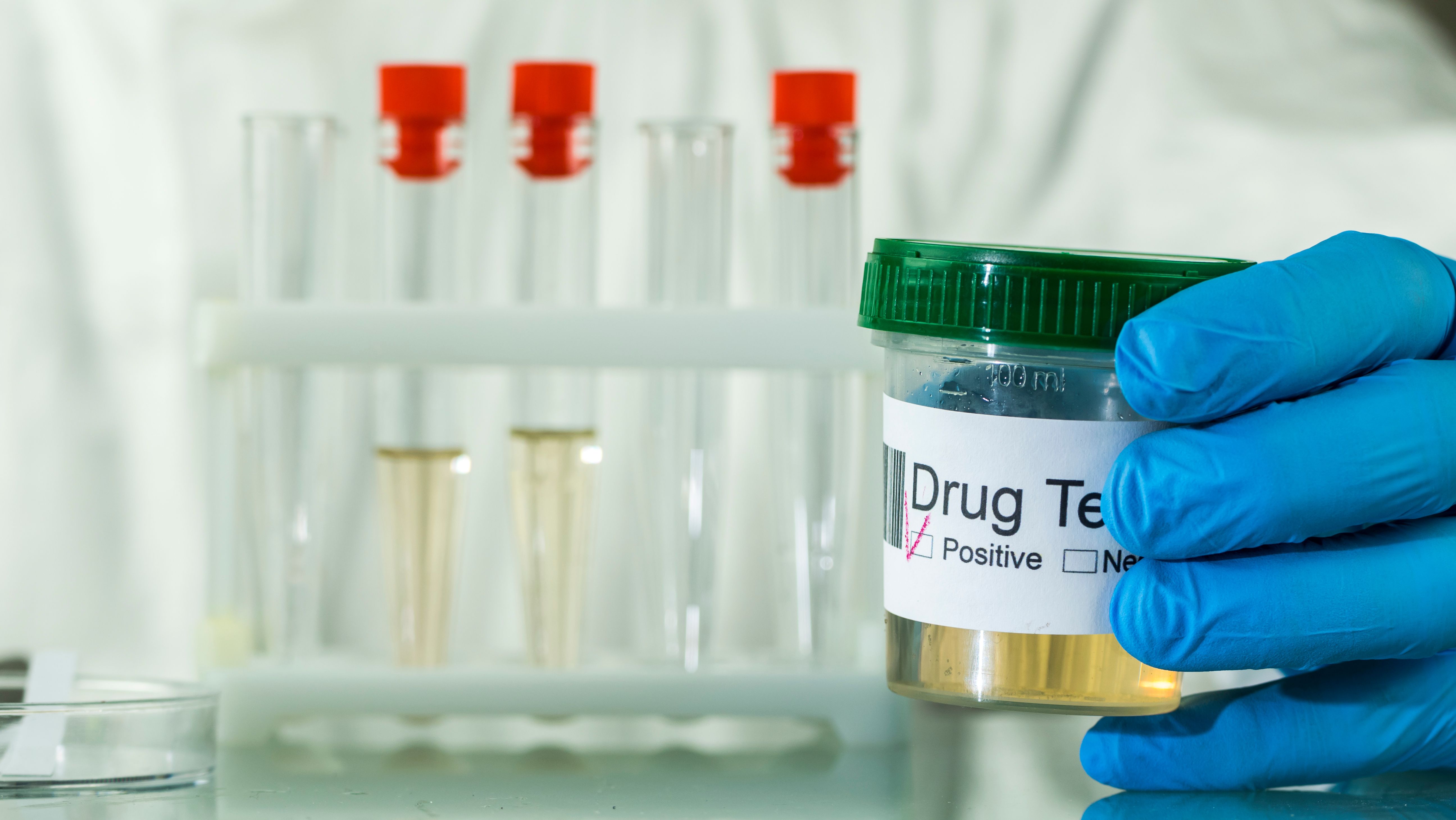Chromatographic–Mass Spectrometric Approaches Support Modern Sports Drug Testing Programmes
Modern sports drug testing programmes have made significant advancements, thanks to the integration of chromatographic–mass spectrometric approaches (1). These analytical techniques have played a crucial role in improving the detection capabilities and retrospectivity of sports drug testing methods, effectively curbing the use of prohibited substances and methods of doping. In his keynote lecture at HPLC 2023, Mario Thevis, from the Institute of Biochemistry at the German Sport University Cologne, helped to shed light on the contribution of these approaches.
Hand in glove holds a jar with urine analysis where mark a positive test for doping or drug | Image Credit: © StockMediaProduction - stock.adobe.com

The constant evolution of analytical approaches in sports drug testing has taken advantage of new insights into drug metabolism in humans. Advances in sample preparation, analysis, and marker-based test methods to develop and implement novel strategies have been made. These advancements have led to enhanced detection capabilities and increased the ability to retrospectively analyze samples, greatly restricting the availability of doping substances and methods.
Elite athletes, like the general population, face exposure to a complex array of environmental factors, including chemicals, biological agents, and physical stressors. This collection of factors, known as the exposome, undergoes specific scrutiny in the context of anti-doping regulations and routine doping controls for athletes. The integration of chromatographic–mass spectrometric methods in sports drug testing has facilitated the thorough examination of an athlete's exposome, ensuring a comprehensive assessment of potential doping influences.
Chromatographic–mass spectrometric methods have been optimized and applied to address emerging challenges in sports drug testing. These challenges include the detection and characterization of advanced metabolic products of both prohibited and non-prohibited substances. By identifying and understanding these metabolites, analytical data are enriched, providing valuable information for decision-making processes in test result management.
The integration of chromatographic–mass spectrometric approaches has revolutionized modern sports drug testing programmes, enhancing their accuracy, sensitivity, and breadth. By leveraging these cutting-edge techniques, sports authorities can better enforce anti-doping regulations, ensure fair competition, and protect the integrity of sports.
Reference
(1) Thevis, M. Examples of Chromatographic–Mass Spectrometric Approaches Contributing to Modern Sports Drug Testing Programs. Presented at: HPLC 2023. June 18–22, 2023. Duesseldorf, Germany. KN15.
Investigating 3D-Printable Stationary Phases in Liquid Chromatography
May 7th 20253D printing technology has potential in chromatography, but a major challenge is developing materials with both high porosity and robust mechanical properties. Recently, scientists compared the separation performances of eight different 3D printable stationary phases.
Characterizing Polyamides Using Reversed-Phase Liquid Chromatography
May 5th 2025Polyamides can be difficult to characterize, despite their use in various aspects of everyday life. Vrije Universiteit Amsterdam researchers hoped to address this using a reversed-phase liquid chromatography (RPLC)-based approach.

.png&w=3840&q=75)

.png&w=3840&q=75)



.png&w=3840&q=75)



.png&w=3840&q=75)


